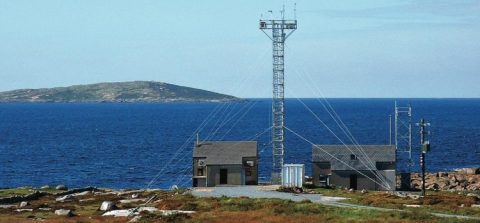
COP21 – WMO: ‘Recordhoeveelheid broeikasgassen in 2014’
11 november 2015 – De hoeveelheid broeikasgassen in de atmosfeer was nog nooit zo hoog als in 2014. Dat stelt de World Meteorological Organisation (WMO), het meteorologisch instituut van de Verenigde Naties.
In haar jaarlijkse Greenhouse Gas Bulletin – met opzet vóór de klimaattop in Parijs uitgebracht – stelt de WMO dat het verwarmende effect van de broeikasgassen tussen 1990 en 2014 met 36 procent toenam. Dit komt met name door de broeikasgassen die lang in de atmosfeer blijven, zoals CO2.
Uit een bericht van de Volkskrant
‘(…) De uitstoot van kooldioxide, ook wel CO2, is de drijvende kracht achter het nieuwe record en veroorzaakt 83 procent van de stijging van de uitstoot over de afgelopen tien jaar. In 2014 was de concentratie kooldioxide 397.7 deeltjes per miljoen (ppm). Een concentratie van tussen de 400 en 500 ppm zou volgens wetenschappers het klimaat flink ontregelen. (…)’
Ook de interactie tussen CO2 en waterdamp verergert de opwarming.
Uit een bericht van WMO
‘(…) The WMO report also highlights the interaction and amplification effect between rising levels of CO2 and water vapour, which is itself a major greenhouse gas, albeit short-lived. Warmer air holds more moisture and so increased surface temperatures caused by CO2 would lead to a rise in global water vapour levels, further adding to the enhanced greenhouse effect. Further increases in CO2concentrations will lead to disproportionately high increases in thermal energy and warming from water vapour. (…)’
De secretaris-generaal van de WMO, Michel Jarraud, benadrukt in een bericht van zijn organisatie het belang om iets aan de uitstoot van CO2 te doen.
Uit het bericht van de WMO
‘(…) “We can’t see CO2. It is an invisible threat, but a very real one. It means hotter global temperatures, more extreme weather events like heatwaves and floods, melting ice, rising sea levels and increased acidity of the oceans. This is happening now and we are moving into uncharted territory at a frightening speed,” he said.
“Carbon dioxide remains in the atmosphere for hundreds of years and in the ocean for even longer. Past, present and future emissions will have a cumulative impact on both global warming and ocean acidification. The laws of physics are non-negotiable,” said Mr Jarraud. (…)
“Every year we report a new record in greenhouse gas concentrations,” said WMO Secretary-General Michel Jarraud. “Every year we say that time is running out. We have to act NOW to slash greenhouse gas emissions if we are to have a chance to keep the increase in temperatures to manageable levels.”(…)’
De cijfers in het kort, uit het bericht van de WMO
Carbon dioxide (CO2) accounted for about 83% of the total increase in radiative forcing by long-lived greenhouse gases over the past decade. The pre-industrial level of about 278 ppm represented a balance between the atmosphere, the oceans and the biosphere. Human activities such as the burning of fossil fuels has altered the natural balance and in 2014, globally averaged levels were 143% of pre-industrial levels. In 2014, global annual average concentration of CO2 concentrations reached 397.7 ppm with annual increase close to the 10 year averaged. The global annual average is likely to pass 400 ppm in 2016.
Methane (CH4) is the second most important long-lived greenhouse gas. Approximately 40% of methane is emitted into the atmosphere by natural sources (e.g., wetlands and termites), and about 60 % comes from human activities like cattle breeding, rice agriculture, fossil fuel exploitation, landfills and biomass burning. Atmospheric methane reached a new high of about 1833 parts per billion (ppb) in 2014 and is now 254% of the pre-industrial level.
Nitrous oxide (N2O) is emitted into the atmosphere from both natural (about 60%) and anthropogenic sources (approximately 40%), including oceans, soil, biomass burning, fertilizer use, and various industrial processes. Its atmospheric concentration in 2014 was about 327.1 parts per billion. This is 121% of pre-industrial levels. It also plays an important role in the destruction of the stratospheric ozone layer which protects us from the harmful ultraviolet rays of the sun.
Water Vapour
Water vapour and CO2 are the two major greenhouse gases. But it is CO2 which is the main driver of climate change. Water vapour changes are the so-called feedback mechanisms and happen as a response to the change in CO2. For a scenario considering doubling of is CO2 concentration from pre-industrial conditions, i.e. from about 280 to 560 ppm, water vapour and clouds globally would lead to an increase in atmopsheric warming that is about three times that of long-lived greenhouse gases, according to the Bulletin.
Globally averaged CO2, CH4, and N2O mole fraction (a) and its growth rate (b) from 1984 to 2014. Differences in successive annual means are shown as shaded columns in (b). (…)’
Bronnen
World Meteorological Organisation, persbericht, 9 november 2015: Greenhouse Gas Concentrations Hit Yet Another Record
World Meteorological Organisation, 9 november 2015: WMO Greenhouse Gas Bulletin
Volkskrant, 9 november 2015: Broeikasgassenrecord in 2014, CO2 grootste boosdoener
Foto: Het GAW Global Observatory in Ierland, een van de meetstations van WMO (WMO)



